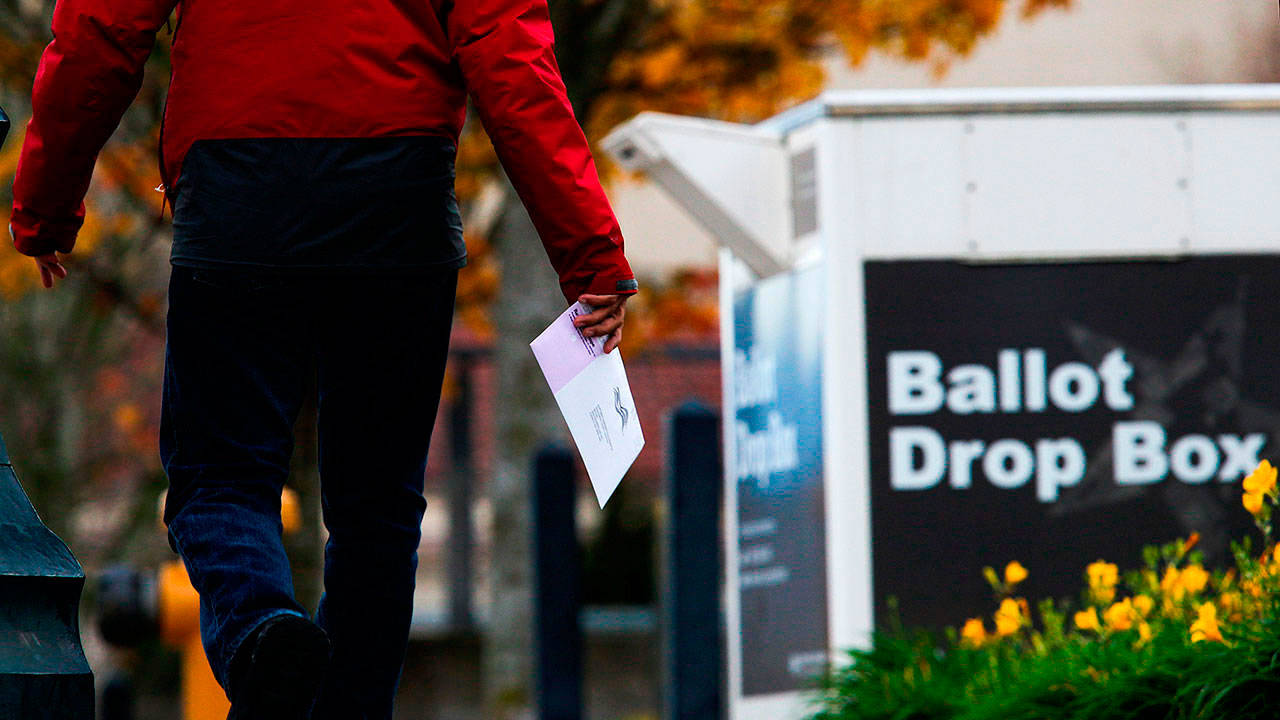By The Herald Editorial Board
As it turns out, voter turnout for Snohomish County in the Nov. 5 general election wasn’t half-bad.
It was, actually, several percentage points below half-bad — or half-good — depending on your personal optimism-pessimism scale.
With only a couple hundred ballots left to count, about 43 percent of the county’s 470,000 registered voters returned their general election ballots; that’s just a point below the statewide turnout of 44 percent, and it’s in line with what Snohomish County Auditor Carolyn Weikel had predicted for the off-year election.
Among the state’s 39 counties, Snohomish was 23rd in terms of turnout; below King County’s rank of 12 with 48 percent, but above 30th-ranked Pierce County with 39 percent. Garfield County, in the state’s southeast corner, took top honors with 64 percent of its 1,690 registered voters returning ballots.
In the days leading up to Election Day, however, the ballot returns looked far bleaker. The day before election day, only 18 percent of ballots had been returned. But a flood of ballots on Election Day — more than 87,000 — pushed returns near the final 43 percent mark.
Neither Weikel nor county Elections Manager Garth Fell — who won election to succeed Weikel as auditor — had a certain explanation for the last-day surge of ballots, but they’ll take it.
For perspective, the 43 percent turnout falls fall short of ballot numbers for recent even-year elections, especially in presidential election years. County turnout was near 81 percent in 2012, 79 percent in 2016 and 71 percent in 2018, but for recent off-year elections it was a solid improvement over the nearly 35 percent return in 2015 and 33 percent in 2017.
As Weikel and Fell make final preparations to count remaining ballots and certify the election, Weikel now prepares to leave office after three terms and assist in the transition to Fell’s management, including hiring of a new elections manager. That position could be filled in January, and will consider candidates from inside and outside the office, Weikel said.
And both are completing work on projects Weikel wanted to finish before she leaves, including the change-over to a new records management system that is being replaced after nearly 25 years; some minor troubleshooting on the state’s voter registration system, VoteWA; and the switch of the office’s animal control work as a part of the licensing office to its own division and efforts to improve its standing among county residents in pursuing puppy mills and animal cruelty cases.
With that and other office priorities, voter participation remains top of mind for both, especially as the county, state and nation prepare for a very high-profile election next year.
It’s long been a fight, Weikel said, to encourage voter turnout, especially in odd-numbered years, elections that concentrate on local elections for county posts, city mayors and councils, school boards and the like and without the bigger names and partisan battles of elections for state lawmakers, state officials, Congress and president.
And it’s a fight that’s on Weikel’s mind as she prepares to hand the keys to Fell.
“I just wish more voters would recognize how important these odd-year elections are,” she said.
Building up turnout has been the focus of local and state election officials for years and was part of the reason for the switch to mail-in ballots about eight years ago and more recent improvements such as a new statewide voter registration system that now allows people to register to vote as late as Election Day.
But we’re nearly out of simpler solutions for encouraging turnout. State lawmakers, Weikel and Fell said, could consider moving local elections to even years, though that would make for an even longer ballot for voters to mark up; this year’s ballot — because of an eyewash of nonbinding “advisory” votes on state tax issues — was two-pages long, with the advisory votes and other ballot measures taking up the front page, relegating county and local races to the back page.
Voters could benefit from better sources of campaign information; and Weikel encouraged the use of local newspapers and other media to learn about candidates and issues, as well as the local and state voter’s guides. But, Weikel admitted to frustrations with the voters’ guides as auditors have limited authority to review what goes into those publications.
For example, Weikel won a battle with initiative promoter Tim Eyman in 2017 when he wanted to use the phrase “B.S.” in objection to a Mukilteo tax proposal in the voters guide. Weikel axed the phrase as vulgar and inappropriate for a publication with the county’s name on it and paid for by taxpayers. But that’s where auditors’ authority ends. She and other county auditors aren’t allowed to make judgment calls regarding whether the statements of candidates or those promoting or objecting to ballot measures are true or false. That leaves voters at a disadvantage, Weikel said.
Such authority for county auditors would present challenges, similar to recent discussions as Facebook, Twitter and other social media outlets have confronted how to address issues of truth in political advertising. But it’s fair to review the issue regarding state and local voters guides.
But, Weikel said, the most effective path toward building voter participation may now take a longer-term effort: better civic education.
“You go back to the elementary schools and middle schools and you start teaching in a civics class what these positions actually do and how they impact your local community,” she said.
That and other efforts are necessary if we’re going to reach voter participation numbers — a basic requirement for effective representative government — that rise above half-bad.
Talk to us
> Give us your news tips.
> Send us a letter to the editor.
> More Herald contact information.

























